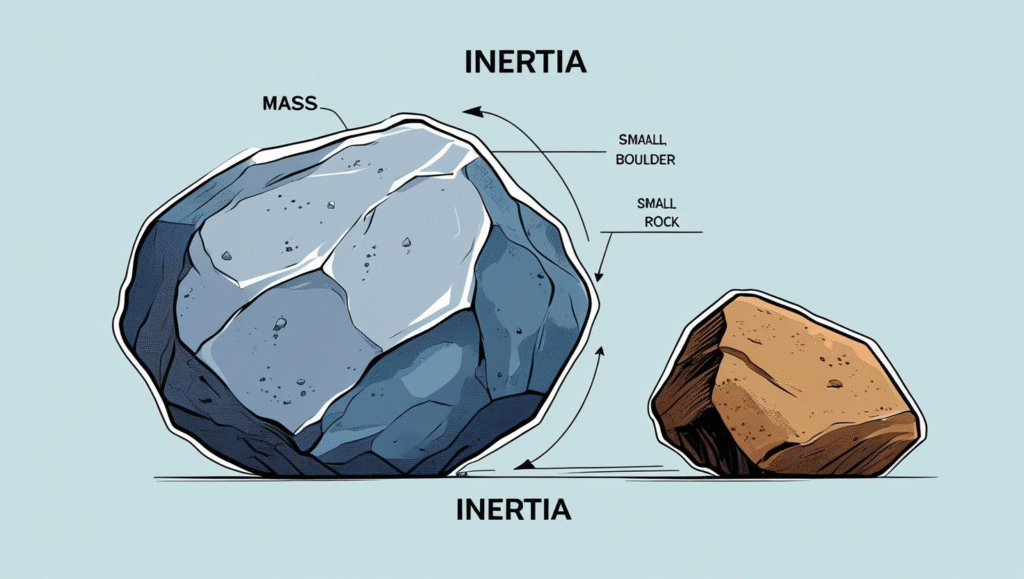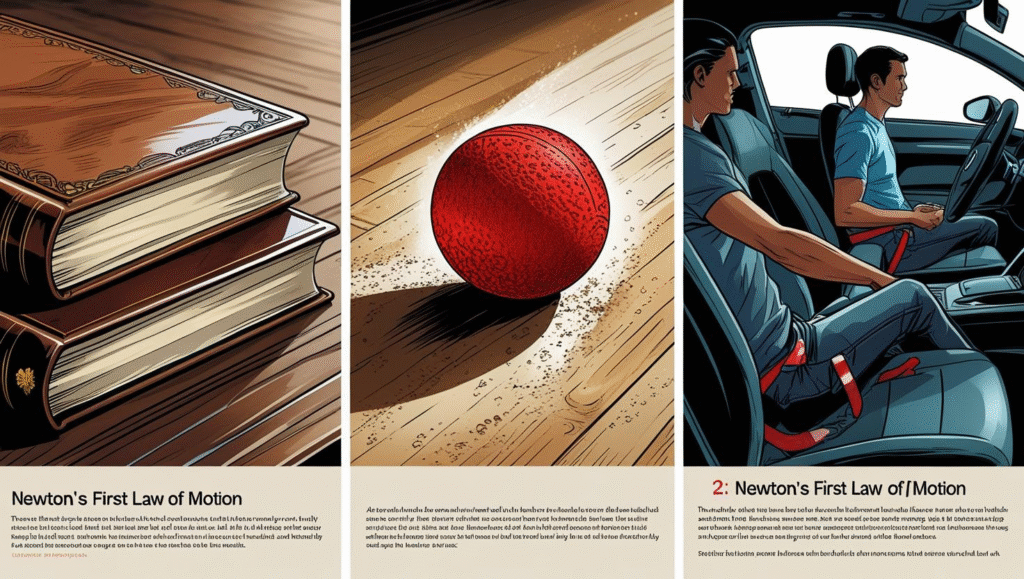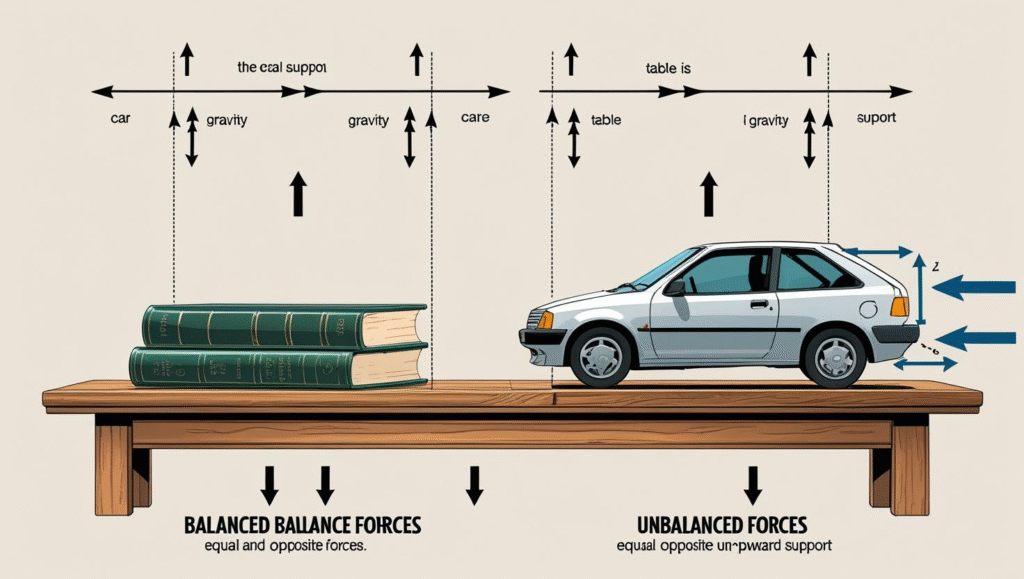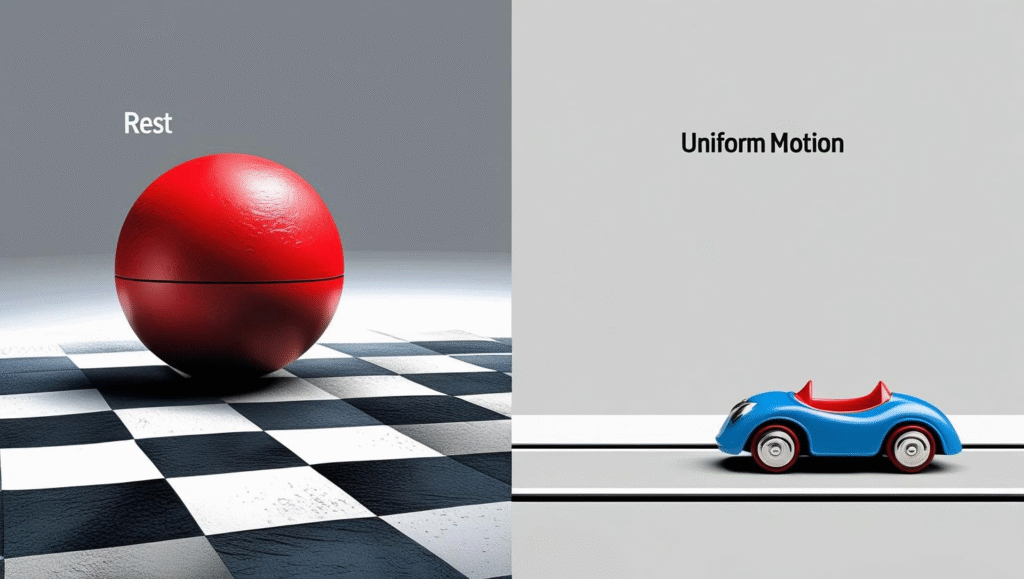First Law Of Motion

Key Points:
Definition of the First Law of Motion:
- Newton’s First Law states that an object will remain at rest or in uniform motion in a straight line unless acted upon by an external force. This is commonly summarized as: “An object in motion stays in motion, and an object at rest stays at rest, unless acted on by an unbalanced force.”
Concept of Inertia:

- Inertia is the property of an object to resist changes in its state of motion. The greater the mass of an object, the greater its inertia, meaning more force is required to change its motion.
- Examples: A heavy boulder is harder to push (change its state of motion) than a small rock due to its greater inertia.
Examples of the First Law in Daily Life:
- Stationary Objects: A book lying on a table remains there until someone moves it. This demonstrates that objects at rest stay at rest.
- Moving Objects: A rolling ball on the ground eventually stops due to friction, an external force that acts on it.
- Seatbelts in Cars: When a car suddenly stops, passengers continue to move forward due to inertia. Seatbelts provide the external force needed to stop them, demonstrating the First Law.

Balanced and Unbalanced Forces:
- Balanced Forces: If all the forces acting on an object are balanced, the object will not change its state of motion. For example, a book resting on a table experiences balanced forces: gravity pulling it down and the table pushing it up.
- Unbalanced Forces: When forces are unbalanced, they cause a change in the object’s motion. For example, pushing a stationary car will set it into motion if the push (force) overcomes the friction and other resistive forces.

Understanding Rest and Uniform Motion:
- Rest: An object is at rest if it is not moving relative to its surroundings.
- Uniform Motion: An object is in uniform motion if it moves in a straight line at a constant speed.

Applications of the First Law:
- Space Exploration: Spacecrafts in the vacuum of space continue moving without using fuel because there are no significant external forces to stop them.
- Sports: A soccer ball stays at rest until kicked, and then it continues moving until friction, air resistance, or another player stops it.
Experiments to Demonstrate the First Law:

- Tablecloth Pull Experiment: Quickly pulling a tablecloth from under dishes demonstrates that objects at rest (the dishes) stay at rest if the tablecloth is pulled quickly enough (reducing the friction force).
Coin on Card Experiment: Placing a card on top of a cup with a coin on the card, then flicking the card away demonstrates inertia as the coin drops into the cup.

Importance of the First Law of Motion:
- The First Law is crucial for understanding motion and force interactions, forming the basis for further study in dynamics and other physical sciences.
Let’s practice!

